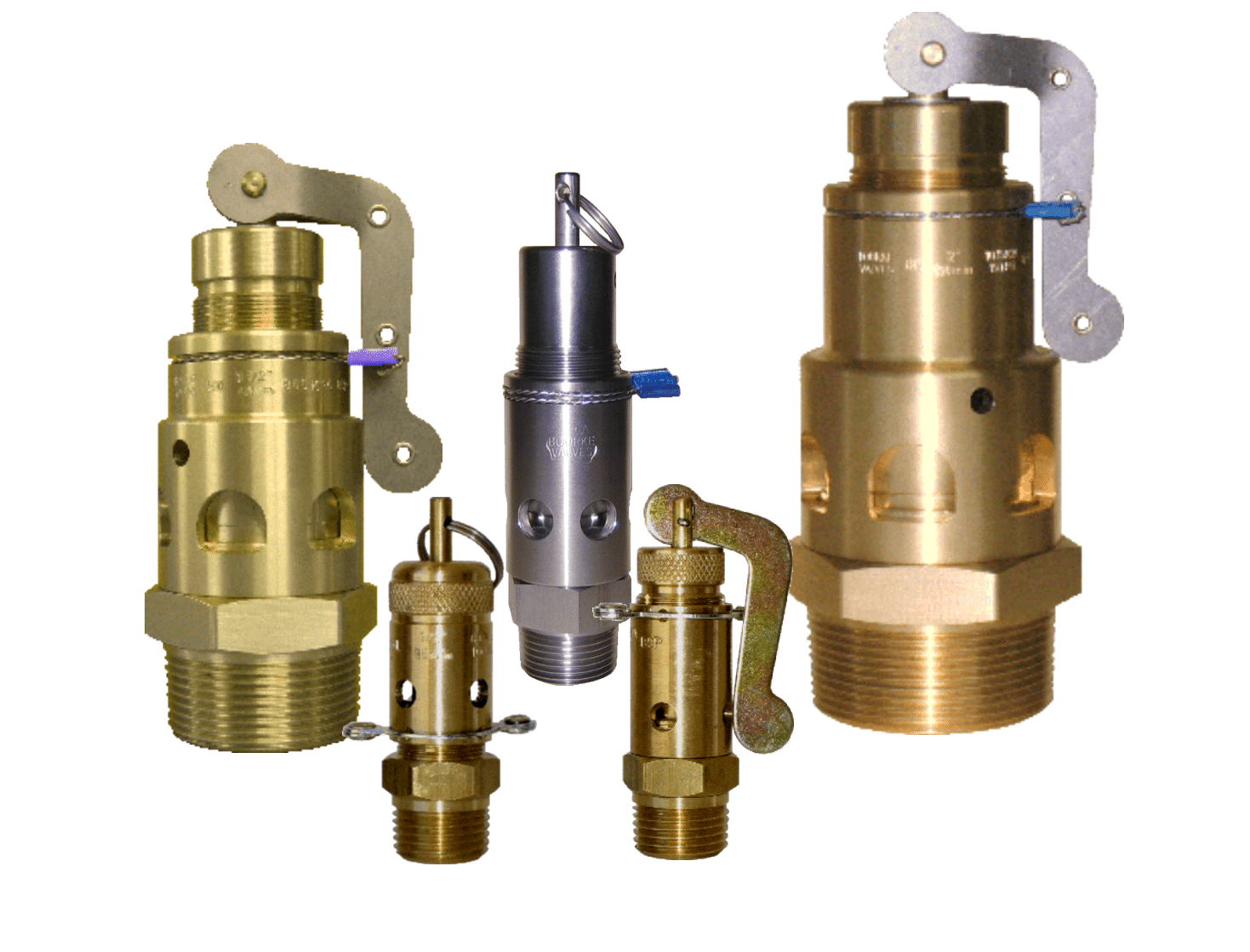
Designation of Bourke Valves part number
Example :- LL-15-1035-BSP
LL - Valve type - RL (Ring Lift), LL (Lever Lift) or HV (HighVolume)
15 - Thread Size Metric (Imperial) - 08(1/4"), 10(3/8"), 15(1/2"), 20(3/4"), 25(1"), 32(1 1/4"), 40(1 1/2"), 50(2").
1035 - Pressure setting in kPa
BSP - Thread Standard (BSP or NPT)
The pressure setting of each valve can be Custom Set to suit individual requirements. To specify a different setting, change the last four digits of the Bourke Valves part number to the pressure required in kPa.
Standard settings available kPa (psi)
|
|||||||||||||||
242
(35)
|
345
(50)
|
620
(90)
|
690
(100)
|
760
(110)
|
800
(116)
|
860
(125)
|
900
(130)
|
1000
(145)
|
1035
(150)
|
1050
(152)
|
1100
(160)
|
1240
(180)
|
1350
(196)
|
1380
(200)
|
1725
(250)
|
Australian made and owned Copyright © 2012 Bourke Valves
Frequently asked Questions

Q: How should a safety valve be mounted?
A: Safety valves should whenever possible be mounted vertically, this will ensure the valve performs effectively.
Q: At what pressure setting should a valve be set to?
A: Typically the valve should be set to open at or below the DP(Design Pressure) of the pressure vessel taking into account that there is a +/- 3% tolerance on the set pressure of the valve. Consideration should also be given to the working pressure, it is also recommended to set a safety valve to a minimum of 10% above the working pressure.
Q: How do I select the correct safety valve?
A: A few things to take into consideration are
1.The Safety valves flow rate should always be greater than the output rate of the air compressor or equipment generating the pressurized gas.
2. The physical size of the Safety valve should be considered with respect to the size of the pressure vessel, this will enable the valve relieving air in an adequate amount of time.
Q: Should a Safety valve be used to purge a pressure vessel?
A: Safety valves should not be used to purge the pressure vessel upon commissioning, as this will exhaust debris and thread sealant medium from within the tank. The effectiveness of the valve may be hampered by this action.
Q: How often should a safety valve be inspected?
A: We would recommend a periodic inspection of these valves every 6-12 months. The customer must determine an appropriate inspection schedule based on the service conditions and the enviroment in which they are operating in. A Boiler inspector may also incorporate this into their regular inspection routine.
Q: What is the difference between a safety valve and a relief valve?
A: A safety valve is set to a predetermined pressure. When the force created from the air pressure becomes greater than the spring force, the valve ‘pops’ fully open and vents air to the atmosphere. The valve will remain open until a reseat pressure is reached. The reseating pressure of a safety valve must not be below 15% of the set pressure.
A relief valve is set to a predetermined pressure. When the force created from the air pressure becomes greater than the spring force, the valve will start to open and flow to atmosphere. As the pressure continues to increase, the valve will open further, with an increase in flow. As the pressure decreases, the valve will close near the pressure at which it opened.
Q: What is the outside diameter of BSP and NPT threads?
A: The approximate outside diameter of these threads are - (1/4" - 13mmØ). (3/8" - 16mmØ). (1/2" - 21mmØ). (3/4" - 26mmØ). (1" - 33mmØ). (1 1/4" - 42mmØ). (1 1/2" - 48mmØ). (2" - 60mmØ)
info@bourkevalves.com.au

Email :

